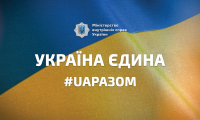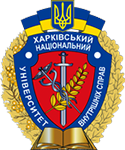LECTURE ON ‘ETIQUETTE CULTURE AS A MEANS TO SOLVE DISPUTES AND CONFLICTS’
On 26 February 2024, Vira Siora, a teacher of the Department of Management, Social Sciences, Humanities and Fundamental Disciplines, conducted a lecture in the discipline ‘Business Etiquette and Communication Culture’ on the topic: ‘Etiquette Culture as a Means to Solve Disputes and Conflicts’ for 2 year students majoring in ‘Air Transport’, educational and professional programme ‘Air Navigation’.
Vira Valeriivna began the lesson by announcing the topic and objective, using a puzzle to identify the key words of the lecture. Once interested, the students quickly focused on the perception of the educational material and actively engaged in the work with the slides of the presentation prepared by the teacher.
A variety of teaching methods were used in the classroom: verbal (explanation of the basic terminology on the topic, mini-discussion ‘Mixed language and the culture of speech’, conversation ‘What factors prevent people from following the etiquette?’); visual (illustrations, self-monitoring - students compared literary speech and mixed language); interactive (puzzle, search and research work by QR code - ‘Rules of speech etiquette in proverbs’).
The next stage of the lesson for mastering the new material was conducted by using a lecture with elements of conversation to enable students to better understand the concept of ‘barriers to communication’, to understand the types of barriers and to understand how to identify a barrier to communication.
The lesson was dynamic and productive, with the goal achieved. The content of the lesson fully meets the requirements of the curriculum and the purpose of the tasks. The teacher successfully selected teaching methods and rationally allocated time. The engagement of students was observed throughout the lesson. The tasks were practical in nature (related to life and future speciality), which motivated future pilots to complete them diligently. The students filled in the gaps in their knowledge and improved the necessary skills on the topic. The hometask was aimed at acquiring professionally relevant skills, such as navigating different language situations, choosing a strategy and tactics of language behaviour, applying conflict management methods, and realising their communication intentions.










